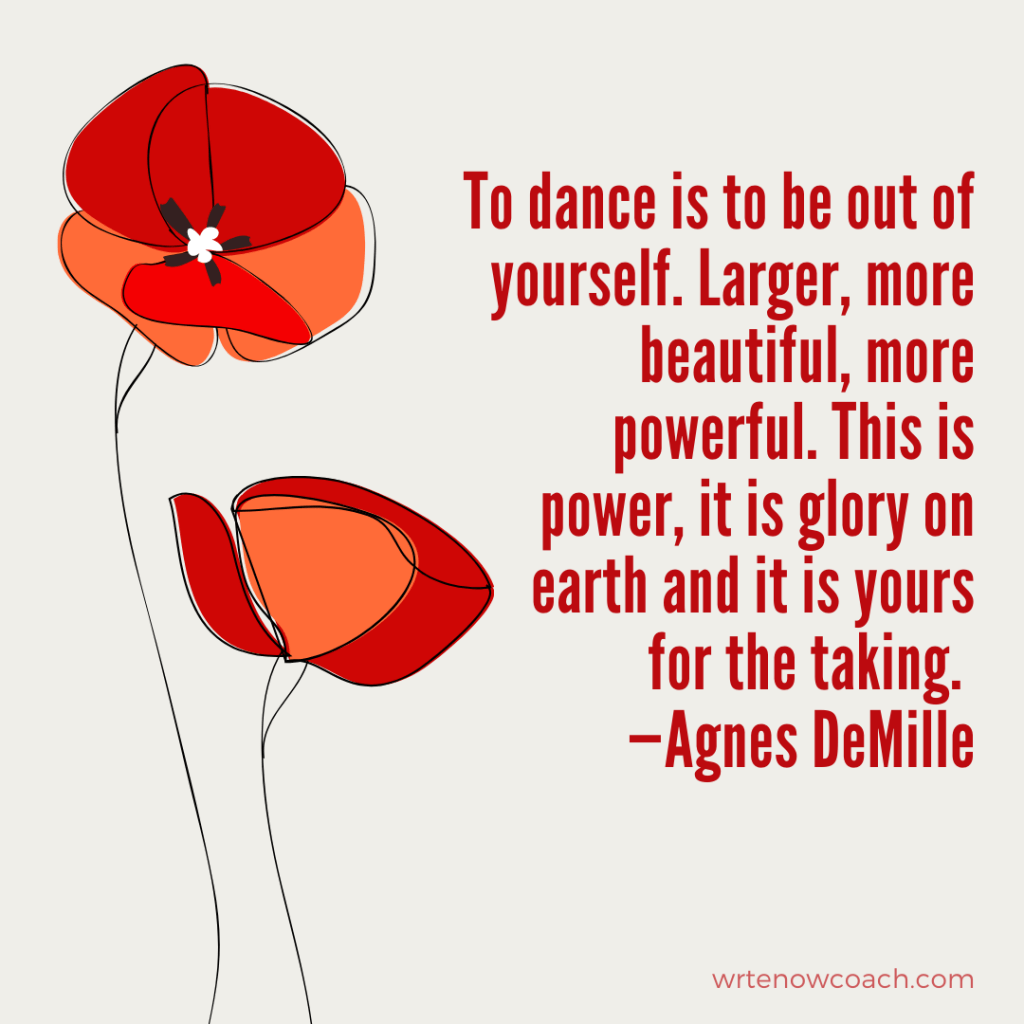How to Organize Your Writing Life
November 23, 2021
Note From Rochelle
Dear Writers,
If you’re struggling to organize yourself and your writing life, today’s tip talks about how to put together the tools we’ve been talking about over the past few months. It’s the sixth and final article in our series on writing productivity based on the book Organize Your Mind, Organize Your Life: Train Your Brain to Get More Done in Less Time by Paul Hammerness, M.D., Margaret Moore, and John Hane. The first five articles are available on the blog. Find the links at the end of today’s article.
Happy writing,
Rochelle, the Write Now! Coach
How to Organize Your Writing Life
by Rochelle Melander
To dance is to be out of yourself. Larger, more beautiful, more powerful. This is power, it is glory on earth and it is yours for the taking. —Agnes DeMille

Did you ever take dance lessons? The teacher demonstrates each step and then puts them all together. At first the dancers look a bit robotic, trying to remember to take the steps in order and count. In order for the dancer to lose herself in the dance, as DeMille talks about in the quote above, the dancer must not worry about the individual steps and just dance. The muscles will remember the steps.
And so it is with the writing process. Over the course of five articles, I’ve outlined the various steps we need to take to organize our mind and write:
*Tame our frenzied emotions and engage our thinking brain
*Attend to our task for a sustained period of time
*Notice when we get distracted, harness our attention, and refocus
*Recall, retrieve, and use information for our work
*Move between different types of tasks.
The final step in the six-step process is simply to connect the dots or dance elegantly between the steps.
How to do it
You’ve learned the mechanics of each step. Now the trick is to immerse yourself in the dance, moving in and between each step. These tools will help:
Practice mindfulness
Every step in this five-step process requires mindfulness. Instead of worrying over the past or future, pay attention to what you are doing right now. Dance this dance (not the other dances you also know). Don’t think about HOW to dance or worry about what dance to do. Just dance. Remember, you can dance only one dance at a time.
Take balcony time
Balcony time is simply stepping away from the demands of daily life and seeing the big picture. Once a month, put on your scientist hat and examine how you are doing at putting the five steps into practice. Treat everything, including your missteps, as information. In other words: don’t judge yourself for losing focus or having difficulty moving between tasks. Figure out why the task challenges you, what you can learn from that, and how you might fix it.
Build strength
We become better and stronger at writing and organizing our time when we practice. Martha Beck talks about how people who meditate become better at focusing by losing focus and then refocusing. As writers, we do the same thing. We get better at taming the frenzy, sustaining attention, and applying the brakes by doing it, over and over again. When we get distracted and then pull our focus back to our writing, we gain strength.
Your turn
How have you learned to put all the steps together and create a writing life than works? Leave a comment below.
Read the first five articles in this series:
Apply the Brakes and Write More
Improve Your Memory and Write More
Write Now! Coach Rochelle Melander is available to help you overcome distraction and finish your writing projects as well as navigate the publishing process. You can book a private consultation.










Your 6-part Blog series is so, so good. THANK YOU.